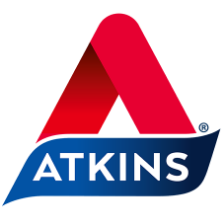- Get inspired
- Atkins Blog
- Ketosis Pyramid
‘Keto’ has become a lifestyle buzzword, but you may not know that keto diets are founded on the same principles as the Atkins lifestyle. Ketosis is the process that occurs when your body burns ketones for fuel instead of burning glucose generated from carbohydrates.
‘Keto’ has become a lifestyle buzzword, but you may not know that keto diets are founded on the same principles as the Atkins lifestyle. Ketosis is the process that occurs when your body burns ketones for fuel instead of burning glucose generated from carbohydrates.
When you reduce your carb intake, your liver begins to turn fat into fatty acids and ketones, which in turn replace glucose as your primary energy source. So as well as burning your excess body fat for fuel, this prevents sugar-induced insulin spikes and post-carb slumps.
Atkins and the keto diet share their nutritional science, but they differ in their origins. The ketogenic diet was first created as a means of preventing seizures in epilepsy sufferers, whereas Atkins was designed as a long-term lifestyle to help people achieve their weight-wellness goals.
Whether you follow the Atkins lifestyle or a keto diet, this ketosis pyramid shows you – at a glance – what to eat, what to moderate, and what to avoid.

Carbohydrates:
In order for your body to go into ketosis, you must reduce your carb intake and replace it with more protein and healthy fats. In Phase 1 of Atkins, we recommend a lower carb intake of around 20g per day.
Vegetables such as green beans, broad beans, aubergine and broccoli are great sources of ‘good’ carbohydrate, so be sure to get your carb intake from these kinds of vegetables whilst altogether avoiding ‘bad’ carbs such as white bread, pasta, potatoes, and anything that contains sugar (which is more products than you might think).
Protein:
It is well known that a higher intake of protein helps your body build muscle and repair itself, but it also keeps you feeling full for longer. For that reason, we recommend that your meals contain 115-175g of protein-rich food (115g would be a palm-sized portion, whereas 175g would be more like a palm and a half).
It’s important to remember that processed protein sources such as battered or breadcrumbed fish and meat are likely to be high in carbs and added sugars.
There’s a wide range of delicious, protein-rich foods you can enjoy when following a low-carb lifestyle:
- Fish such as mackerel, tuna, sardines and salmon
- Meats such as lamb, pork and beef
- Poultry such as chicken and turkey
- Shellfish such as prawns
- Veggie options like tofu, edamame beans and lentils
Natural Fats:
Natural fats are a key component of both the Atkins and keto diets, and are a flavourful addition to any meal. There are many ways to increase your daily intake of natural fats, which you can get from the following products:
- Dairy such as eggs, cream and cheese
- Fattier meats and fish such as chicken thighs, lamb and salmon
- Oils such as olive oil, coconut oil and flaxseed oil
- Other sources including full fat mayonnaise and avocado
Our salmon with avocado salsa recipe is a great example of a dish that’s low in carbs yet high in natural fats.
Although fat is important to both Atkins and the keto diet, make sure you avoid trans fats such as those found in deep-fried foods and processed snacks such as crisps and popcorn.
The Atkins Lifestyle:
Atkins and the keto diet are founded on the same principles and are both backed by sound nutritional science. We understand that any lifestyle change may seem difficult at first, so until low-carb living becomes your way of life, remember our key advice on how to enjoy delicious low-carb meals.
If you decide that a low-carb lifestyle is the best way to reach your weight wellness goals, we have the resources to help you on your wellness journey. Check out our low-carb recipes, our meal plans, and our low-carb living blog full of advice and tips.

Atkins Nutritionist



